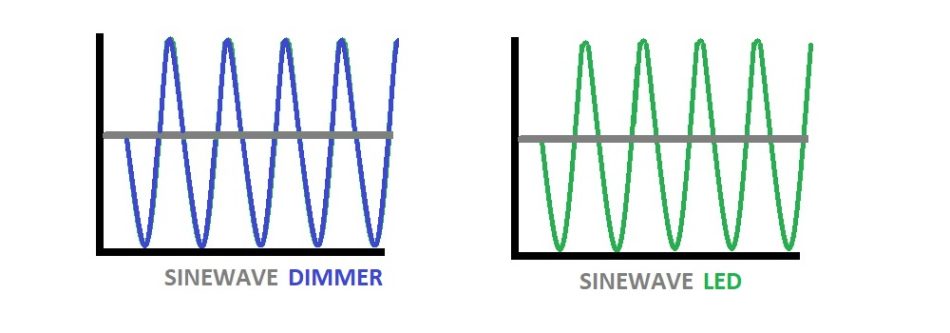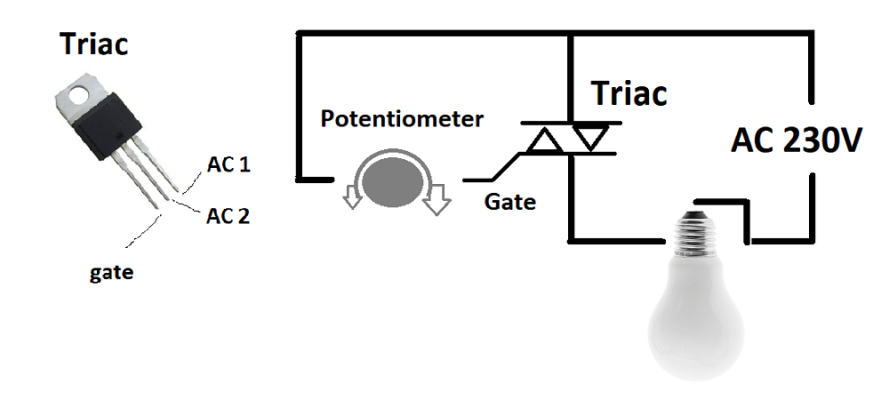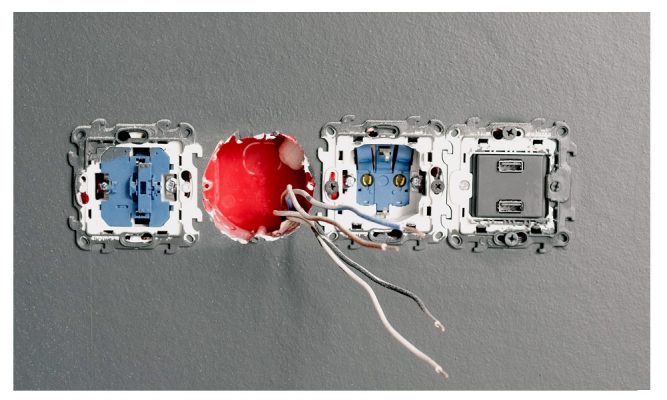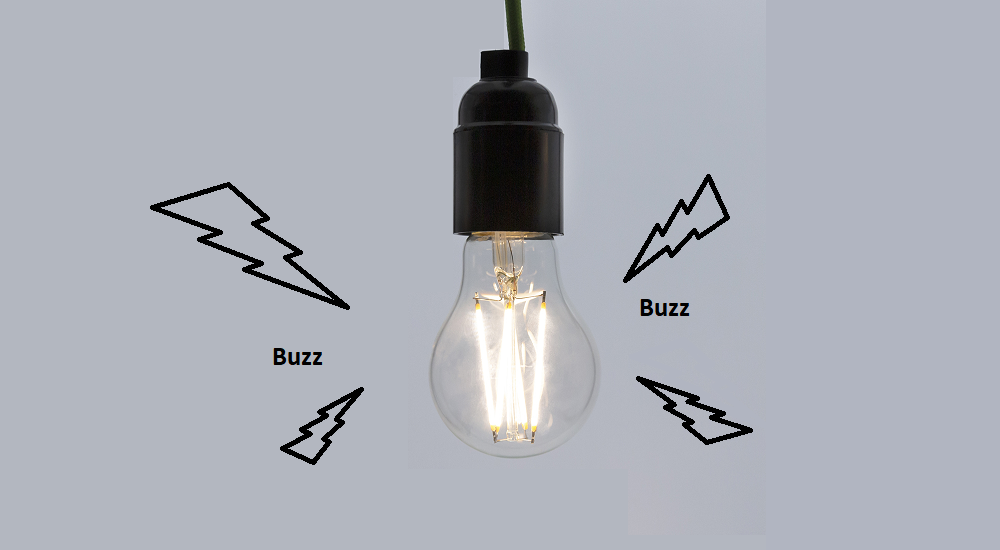Over the past thirty years or so, LED lighting has become an increasingly popular lighting technology, also for everyday domestic use. One of the advantages of energy-efficient LED lights is that they do not need to warm up before they start to glow, unlike fluorescent tubes, for example. When we turn on the LEDs, they just light up. However, a new phenomenon has emerged in the case of LED lights, especially in the transition from halogen to LED, that is, LED lights may buzz.
Why do LED lights buzz?
LED lamps may buzz, especially when dimming the lights. While the Led works well at all brightness levels, the LED lamp can produce background noise: buzzing, humming, buzzing and even a shrill beeping sound. All LEDs, including non-dimmable ones, may buzz. It’s worth finding out what’s causing the buzz, because dealing with these noises is no fun. Especially in quiet rooms, even small buzzing noises are disturbing.
Does buzzing indicate a fault?
When LED lights buzz, the buzzing or other sound is often commonly associated with faulty technology. In a way, that’s not quite true. Buzzing is common in most LED lamps and there are several factors, such as overvoltage, incompatible dimmer, or wiring error, that contribute. The quality of the LED lamp is not the primary factor in the buzz. Both low-quality and high-quality LEDs are prone to buzzing. Overvoltage will shorten the life of the LED, so it’s worth solving the problem.
Overvoltage causes buzzing
Led lights may require, for example, 12V, 24V or 36V. When connected to the mains supply (230V), there must be a power supply (e.g. a DC-DC converter) in between to stabilise the voltage of the LED. Alternatively, driver can be set to constant current to the LED. In this case, it is a standard power supply. After all, if the wrong amount of current is going to the lamp, it can be heard in the light source or power supply as a buzzing sound. There may also have been a power surge in the electricity network, damaging electronic equipment and causing the lights to buzz.
An occasional problem in the kitchen may be that the LED lights buzz when the microwave is on. This is due to an increase in power in the same circuit. In the same electrical circuit, the device unexpectedly draws more energy. There may be other high-powered appliances in the kitchen that draw more power from the circuit, causing an over-voltage on the LED.
Led lights are created to be energy efficient and energy saving devices, as we know. Led luminaires always have a led controller, which is designed to adjust and reduce the power of the led. When high power consuming devices are switched on, a small overflow of current occurs in the circuit to the LED controller. LED lamps tend to control this excess current, which causes buzzing. At the factory, the voltage level is set according to the needs of the LED lamps.
Repairing buzzing caused by overvoltage
Can buzzing from LED lights be caused by the mains? The best way to solve this problem would be to study the electrical circuits. Wiring systems make up the majority of electrical circuits. They are challenging to understand, and only a qualified electrician can identify the problem and carry out the repair. One of the best methods to permanently solve buzzing is to isolate the lighting circuits from other equipment. In all new houses, lights are generally on a separate circuit (with their own fuse).
Led lights are buzzing because the dimmer is incompatible
The power of the lamps is generated and controlled by a power supply connected to the luminaires and a dimmer connected to the power supply. A transformer helps to adjust the voltage. To avoid unnecessary current, driveralso includes devices such as chokes and windings to regulate the current supply.
Incompatible dimmers may allow uneven current flow driverto the lamp. For example, in TRIAC dimming, cutting the sine wave at the wrong point causes the lamp to buzz, or the light to flicker. In the picture below, the waves are in sync, and dimming smooths both waves evenly. Uneven voltages result in buzzing.

It is important to note that other types of lamps do not suffer from this problem in the same way. Their design can adapt to small changes, but due to technical limitations, LED lamps cannot handle current variations as well. This is one of the reasons why electrical appliance manufacturers produce dimmers specifically for LED lights.
Repairing the hum caused by the dimmer
LED manufacturers are also trying to solve the dimmer problem in a number of ways. For example, resin is used in ballasts to reduce buzzing by damping components. However, its benefits are minimal.
The best course of action in this case is to buy good quality dimmers that are compatible with the LED in question. Compatibility with the dimmer is crucial. If this is not the case, an overflow or cutting the wrong edge of the sine wave will cause the lamps to buzz. We have written several articles on the different dimming techniques, click on the link below for more information on how the TRIAC dimmer works. Incompatible dimmers should be replaced by compatible dimmers. At LedStore, we test all our luminaires with thirteen different dimmer models, so we can recommend the most suitable dimming method.

Led lights are buzzing because the wire connections are loose
It is clear that the buzzing of LED lamps is caused by voltage fluctuations. There are other reasons for these voltage fluctuations besides driverand the dimmer. If the fuse in the electrical panel is inadequate, buzzing may occur. A major problem that can lead to unstable current output is loose wiring. If the wire connections driverare not properly closed, the electricity running through the cable will alternately make contact and not make contact, causing buzzing. It can also cause serious damage to other equipment. One of the many factors that contribute to house fires is loose wiring. This is why you need to take this problem seriously and address problems such as loose wiring as soon as they occur. The electrician must examine the components of the recessed lighting. He or she will know how to repair the joints safely and give you good advice if you need to replace them.

Ask an electrician to check the wiring. Photo: by Pexels
Is buzzing dangerous?
When the LED lights buzz, it would be useful to analyse whether the sound is coming from the dimmer. If the noise is coming from it, you should notice it as soon as possible and call an electrician, as the cause could be a bad contact in the wiring. Of course, it may also be a compatibility problem with the bulb you just bought, in which case it is not dangerous. The buzzing is also not dangerous if the sound source is the LED bulb itself.
If the buzzing is coming from the wires, there are a few simple fixes. All connections should be checked to see if all wires are properly connected. In the case of mains power, please note that to avoid the risk of electric shock, switch off the fuses. It is also best not to leave any wires hanging to avoid damage.
The Centre for the Promotion of Electrical Safety (STEK) has compiled good information on its website about What electrical work you can do yourself.
Conclusions
Whirring can occur in a lamp, dimmer or power supply, ballast, etc. Whirring is a common feature of LED lamps themselves, as they are less resistant to voltage changes than their predecessors. There are a few steps you can take to get your LED light working properly. Remember, however, that you need an electrician for mains power work. So don’t give up, because LED bulbs are still efficient, last longer and are readily available. Demand for LED lights is growing rapidly and experts predict that it will reach historic penetration levels, from 50% in 2023 to 85% in 2028.
Led dimming expert
LedStore has been an expert in LED lighting and lighting design since 2010. We have our own product design, so our products are technically state-of-the-art. Products have quarantee for up to 7 years. We also carry out lightand maintenance. We offer as our own service custom-made LED strips, i.e. custom-made stripstrips in aluminium profile. Also installed.
In our LedStore collection, we focus on dimmable, temperature-controlled and high colour rendering luminaires with a high level of quality and guarantees of at least 3, up to 7 years. We make around. 500 lighting designs for our clients’ sites. Read more here or order a lighting design
Remember that we are always available to support you along the way, by email(myynti@ledstore.fi) and by phone (045 251 4510). Feel free to share photos of your own projects on social media #ledstorefi on IG and ledstore.fi on FB. We love to see the cool things our LEDs do, and it helps to provide inspiration for those who are not sure about the power and awesomeness of LEDs. Did you know that we already have over 3500 pictures of our LED installations in our Gallery!
Photo gallery of Led lights:
Product gallery: pictures of products in different installation locations
Indirect light: indirect light in different spaces
Room-specific: Light in different rooms
References: complete houses that have been photographed

